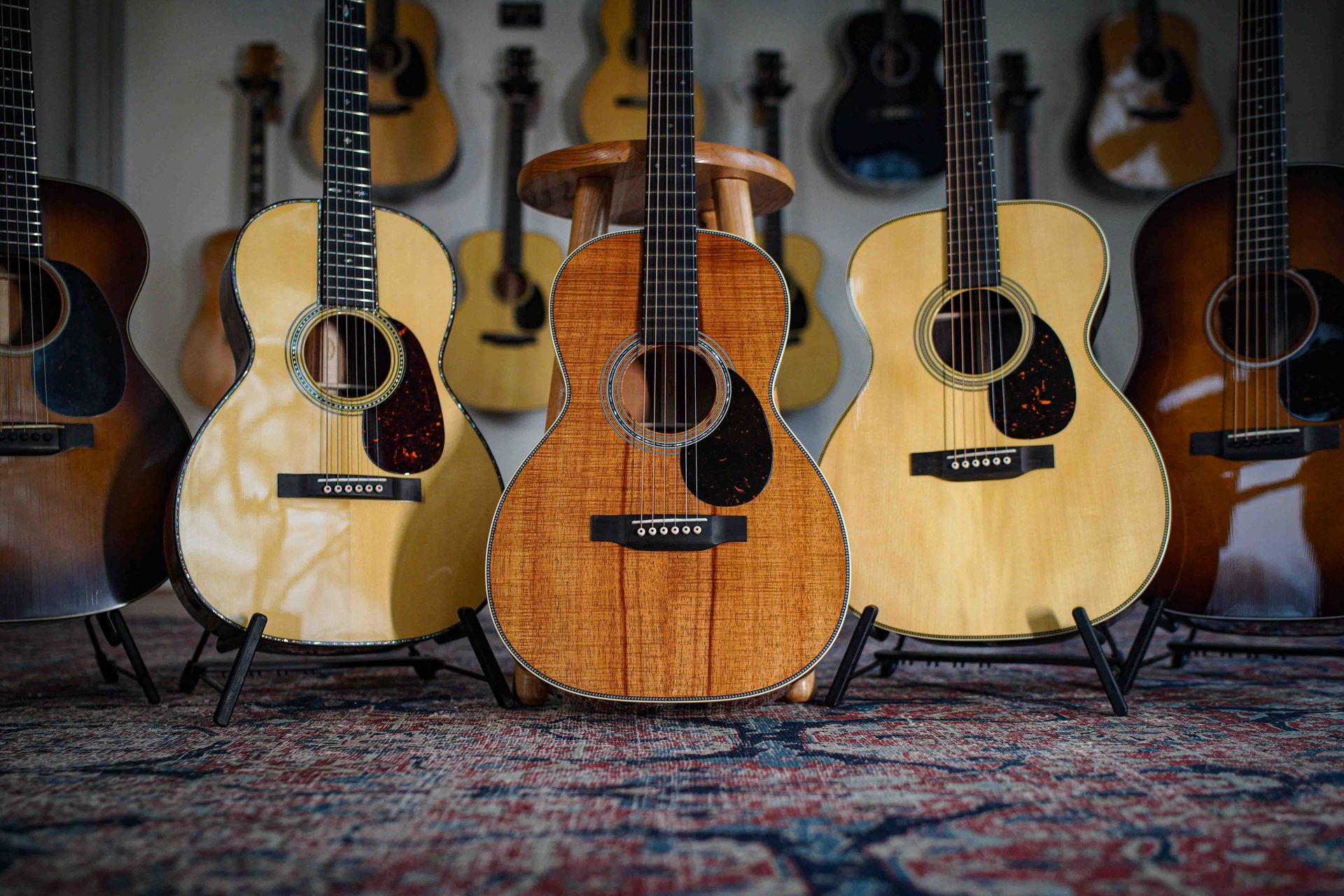Baking guitar wood has been around for a very long time, but about 20 years ago it took off with the electric guitars from Music Man getting ‘baked maple’ necks. This looks great because the grain jumps out a bit more and it benefits the stability of the wood. It was dismissed by some as hype, but now ‘baked’ guitar wood is here to stay and has also been embraced by many acoustic luthiers. Fortunately, because it really offers something extra.
What is a torrefied guitar?
Torrefaction or the very gentle roasting of wood has been around for years. Even the Vikings did it to make wood lighter and stronger. The furniture and floor industry has also been 'baking' for decades and violin builders turned to this technique ages ago. This torrefying is done at moderate temperatures and without oxygen, making sure the wood gently dries, but does not burn. This forced drying of tonewoods has the advantage that all kinds of fluids that are still in the wood disappear or change composition. As a result, the torrefied wood resembles the wood of instruments that are decades old and that we love so much because of that beautiful sound.
Does a torrefied guitar sound like a vintage guitar?
Yes and no. Torrefied guitars sound different, drier, have more mids, are often a bit louder in volume, but they sometimes sacrifice some of the deep low a crisp high that ‘fresh’ guitars have more of again. So they lean a bit more towards vintage guitars and are a very good and affordable alternative for that. But the same? No, they are not, because they lack the mojo we often see and hear with real vintage guitars. Those instruments are completely aged and that makes them different from guitars with a torrefied top.
Just like vintage guitars, torrefied guitars are very suitable for studio work, because they sit nicely in the mix. And they are suitable for the stage, because the wood is a bit more stable and therefore suffers less from changing temperatures and humidity.
Are torrefied guitars more expensive?
Yes, firing the wood takes more time, things do go wrong, so there is more risk and all those costs are reflected in the price. But as more and more builders make their tops more is, we are seeing prices drop sharply. Eastman , for instance, already offers a beautiful dreadnought with a Thermo Cured spruce top for less than 1300 euros. That was really unthinkable a few years ago and is not for nothing Fellow Milo's favourite guitar under 2,000 euros.
Do torrefied guitars wear out sooner?
Probably not. After many years, wood can 'wear out', but that can take centuries. We have had a Torres Guitar in the store, which was over a hundred years old and still very much alive. Most luthiers try to resemble 'Golden Era' acoustic guitars from around 1940. So the tonewood is not turned antique over night, but gets some grey hairs and turns somewhere around 70. Such torrefied woods can still be great for decades to come and these instruments are also likely to survive several generations. With the greatest advantage that the first generation does not have to wait for that beautiful, dry tone.
What is the best torrefied acoustic guitar?
That's a matter of taste, so it's hard to give a definitive answer. All guitar builders have their own 'recipe' for baking. Dana Bourgeois was one of the first acoustic builders to apply this on a large scale and he still does so with often stunning results. Collings also do magical things in their wood oven. Closer to home, we see that Atkin puts a very different spin on his guitars. Less clean, because besides torrefying he also freezes the wood, aiming to capture that vintage vibe even better.
Torrefying wood has now become an extra part of luthery, in which you can see and hear the master's hand. The best way to find out what suits you best is to just give it a try, feel free to contact us at:
info@tfoa.eu or call 0523-232205
And of course you can use the chat function on this site!
Which guitarbrands offer torrefied guitars?
For years it was a bit of a niche, reserved for exclusive builders such as Bourgeois, Collings and Atkin, but now Martin has also been participating for five years with their Vintage Tone System.
Fortunately, we can also add Gibson to this list with their ‘aged’ guitars and Fender has a Professional Stratocaster with ‘roasted pine’ this year as a very interesting alternative to the increasingly scarce Swamp Ash.
Looking for your ideal acoustic guitar?
We help you step by step in our Acoustic Guitar Buying Guide.
